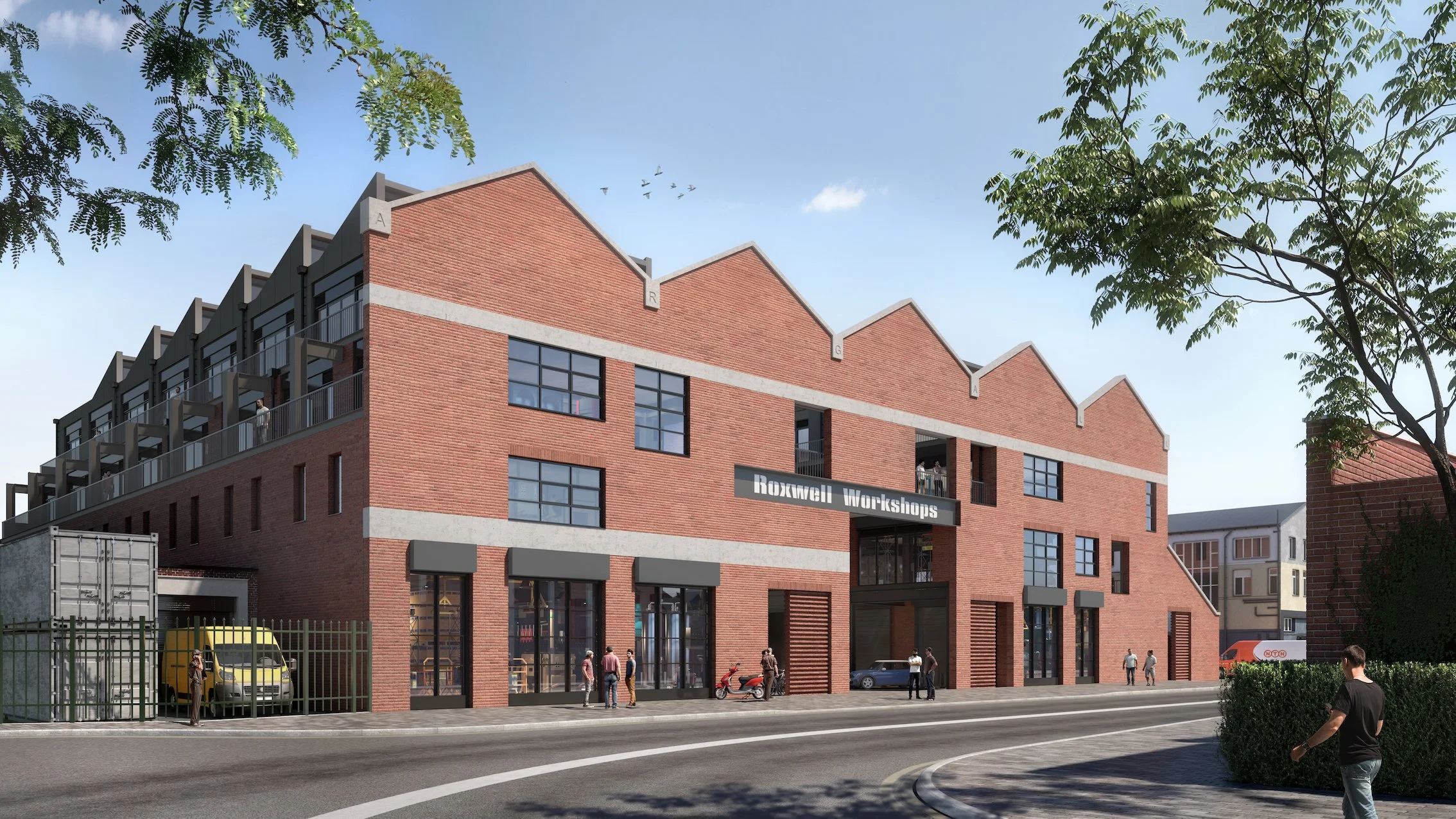HKR Architects secures planning for light-industrial co-working scheme in London
Appointed by Lee Valley Properties Ltd, HKR Architects has successfully secured planning for the one of the first light industrial co-working scheme in Argall Avenue, Walthamstow, North-East London, which will help revitalise the existing land, by modernising it, bringing diversity of use, intensifying, and creating better value for the site as well as creating new vibrant community.
Roxwell Workshops sees the demolition of the five single storeys existing B1, B2 and B8 use buildings on site to be replaced by a new light industrial co-working building with a gross internal area of 6,085 sqm arranged over four storeys with associated parking, communal amenity space and sharing terraces for co-working use. The local zoning plan allocates the area for industrial use, however there is a building nearby with commercial ground floor which secured residential use via permitted development.
The design complements the art-deco and industrial architecture of the wider vicinity. The longstanding history of industrialisation has undergone a modern revival, inspired from the existing elements of red brick and dark frame windows. This coalesces with the modern requirements of today's industrial demands, resulting in a beautiful co-working light industrial space, a testament to its past and a prototype for inclusive industrial spaces for the future.
Flexibility and adaptability are at heart of this development. The floor plans have been developed with large spans between structures providing open spaces that can be configured into different sizes/uses such as workshops, offices, warehouses etc by easily installing or removing partitions. In addition, the ground floor ceiling is designed higher than other floors and has a crane-supporting structure to accommodate potential industrial use, storage or large vehicles. There is also the option of combining the ground and mezzanine floor for larger space requirements, where for example ground floor is industrial use and mezzanine is accompanying offices.
With its unique co-working light industrial use, each unit will have the ability to accommodate a range of tenants, whose MEP and daylight requirements vary significantly, for example some units will be used as a metal workshop while others could be offices or storage. In order to provide enough flexibility a unitized window/door system were designed, which can incorporate different type panels depending on tenants needs. Panels next to the door can be interchangeable between glass, spandrel, louver or roller shutter door depending on space requirements.
The upper floor design is developed to have terraces for amenity spaces, which can be used in different ways such as collaborative workspaces between different businesses and will create a symbiotic community around the space.
Sustainability measures have been included which exceed the requirements. The angle of the saw tooth roof has been designed to accommodate solar panels at the best angle while the roof window allows for better daylight into top floor units. The building is also located in a high flood area, so special measures are included.
Ayna Azhigali, Associate Director at HKR Architects comments, “’This project creates a unique design where industrial uses stack vertically instead of horizontally, allowing different occupations within the building. This allows for the provision of industrial use at lower levels, which is required by land zoning and at the same time has a complimentary use above which could be light industrial or office or work life unit.”
The design also lends itself to exploring the potential to deliver several floors of residential above which could unlock a lot of industrial land in London and provide successful projects where different occupations work in symbiosis, helping to regenerate the area and bring more diversity and a more financially viable proposal.


